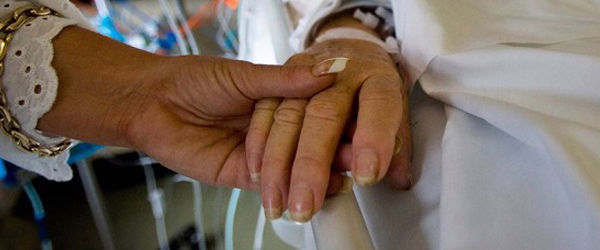Among all the great stories in the world, the most common, best-known and perennially intriguing are those that deal with heroes and heroines. These are stories that describe someone, a man or a woman (though most often a man), who has to journey through danger, suffering, opposition, misunderstanding and humiliation to achieve some noble goal. These kinds of stories abound everywhere in classical mythology, Scripture, epic novels and in popular movies. The details of the stories vary enormously, but there is a common pattern in them: For noble reasons, the hero or heroine must descend into some underworld of suffering and endure that suffering, usually in the face of fierce misunderstanding and opposition, so as to eventually emerge victorious, a conqueror, a hero, an object of admiration, and as one who now somehow stands above others because of this achievement. As well, very importantly, in these myths and stories the world is better and somehow saved because of this person's courage and his or her willingness to endure pain, misunderstanding, isolation, and humiliation. Most commonly, in these stories, the hero or heroine accomplishes some feat in the world, a victory in war or in sports. But, at a deeper level, many of these stories are meant to be understood as journey inside of one's own psyche and soul. Mythically this is expressed as the quest for the "holy grail," and ultimately the "holy grail" is something found at the end of an inner journey, namely, a rarified human maturity and sanctity.
A true hero's journey, one that transforms us from unhealthy pride and egocentricity to healthy humility and generativity, will always be a paschal journey within which we, like Jesus, drink the chalice of humiliation, albeit without growing bitter or losing hope.
In a new book, “Nature and the Human Soul,” Bill Plotkin reflects on how today, our understanding of this has become badly distorted; so badly in fact, that, for our culture, the "holy grail" is envisaged as little more than the glory of being a teen-idol. Here's how he puts it: In recent decades, pop culture has diminished the mature form of the hero's journey by confounding it with an egocentric, adolescent caricature. We're all too familiar with the Hollywood story in which the valorous “hero” or “heroine” — from John Wayne to James Bond, from Superman to Mighty Mouse, from Batgirl to Bionic Woman — risks his or her life, health or wealth, whether in sports, combat, espionage or an impossible mission, in order to save the day, the damsel or the planet and reap the rewards of personal triumph and acclaim. In this immature rendition of the hero's journey, the protagonist goes forth to cheat death and becomes a “man” or “woman,” or flaunts machismo, more in the manner of a celebrity icon or teen idol than a mature adult. The adolescent hero returns with a few scratches but is essentially unchanged as a person. Although often entertaining, this is Dungeons and Dragons, not a mature hero's journey. Both men's and women's paths to genuine maturity are distinct from juvenile, usually masculine, heroism. The mature hero endures a descent to the underworld, undergoes a decisive defeat of the adolescent personality (a psychological death or dismemberment) receives a revelation of his true place in the world, and returns humbly to his people, prepared to be of service to his vision. This is equally true of the mature heroine. The hero's journey is meant to transform adolescence into adulthood, to turn someone into an Elder, and this is not necessarily achieved by conquering invading aliens, out-muscling the bad guys, or by winning an Academy Award or a championship trophy. Too often these conquests have the opposite effect of deepening egocentricity and locking one even deeper inside of immaturity by reinforcing the adolescent daydream of being the hero or heroine who is set apart and above. What is needed to kill the adolescent personality is precisely a defeat or a humiliation that cracks open and exposes the immaturity of our adolescent daydreams within which we are always the superstar, the admired idol, the conquering hero, the one who is brighter and stronger than others, and the one who is somehow immune from sickness, death and the frailties of ordinary humanity. A true hero's journey, one that transforms us from unhealthy pride and egocentricity to healthy humility and generativity, will always be a paschal journey within which we, like Jesus, drink the chalice of humiliation, albeit without growing bitter or losing hope. A true hero or heroine often looks a lot more like the humble, gentle, soft-spoken grandmother or grandfather (whose every wrinkle tells a story of work, worry, grief and tears) than he or she looks like the man or woman who is triumphantly and glamorously hoisting a sports trophy or an Academy award. Inside our culture today, celebrities are the new saints — and the magazines, television programs and internet sites that photograph their persons and give us intimate details of their lives are, for large parts of our culture, the spiritual reading for our time. That is what it is, both for good and bad. But we need to realize how deeply we are swayed by these images of adolescence, rather than of mature humanity. Oblate of Mary Immaculate Father Ronald Rolheiser is a specialist in the field of spirituality and systematic theology. His website is www.ronrolheiser.com.
{gallery width=100 height=100}gallery/2011/0930/rolheiser/{/gallery}

